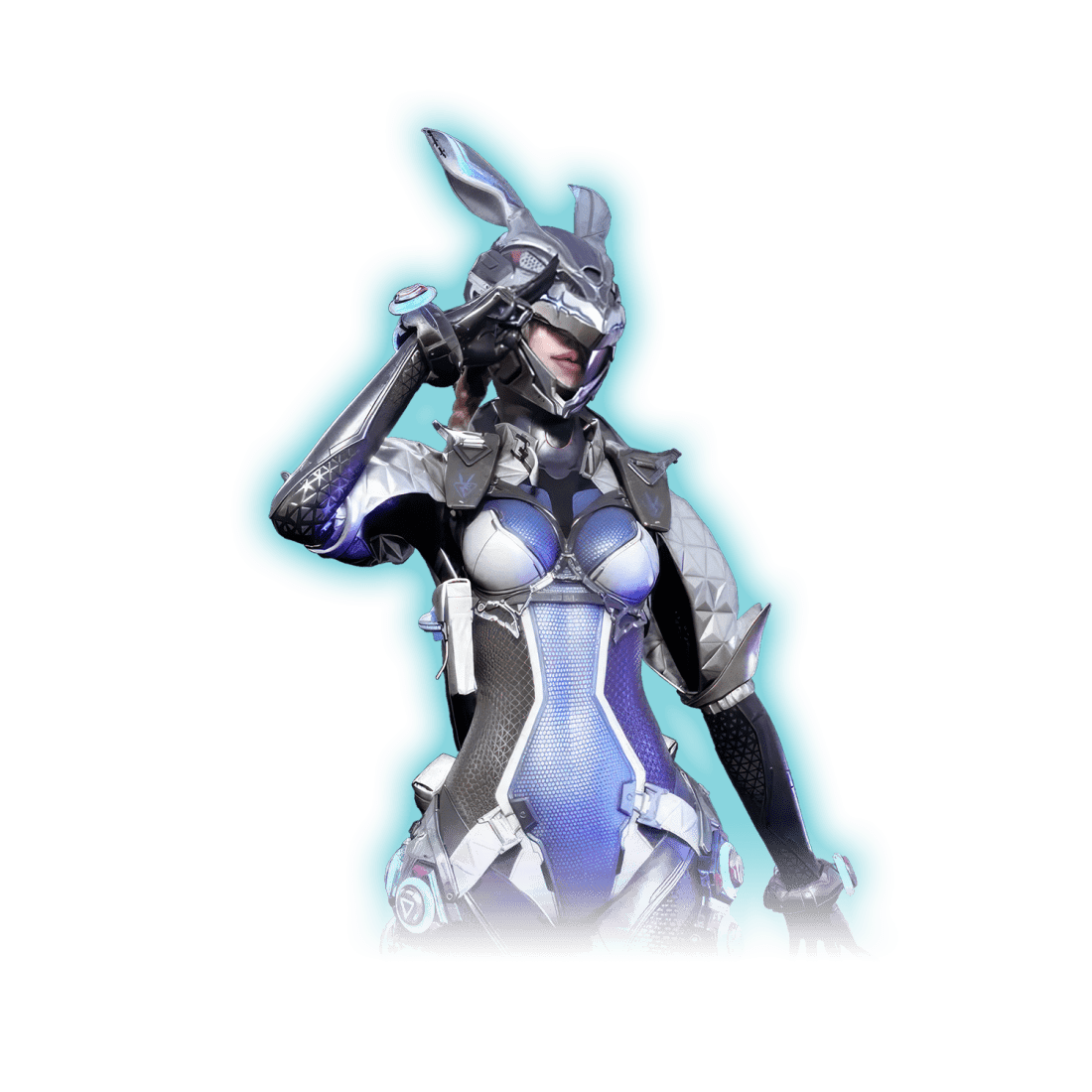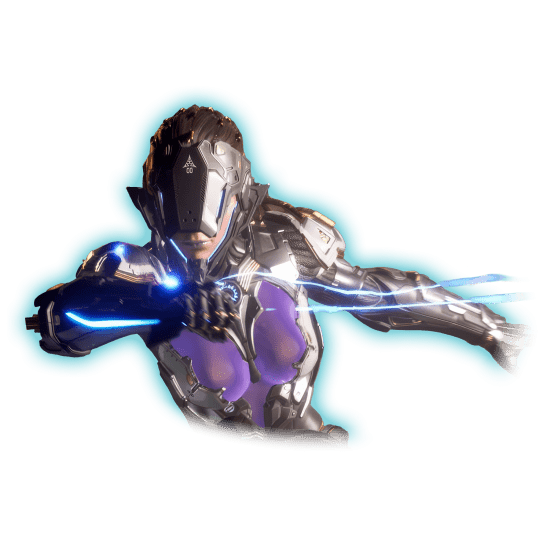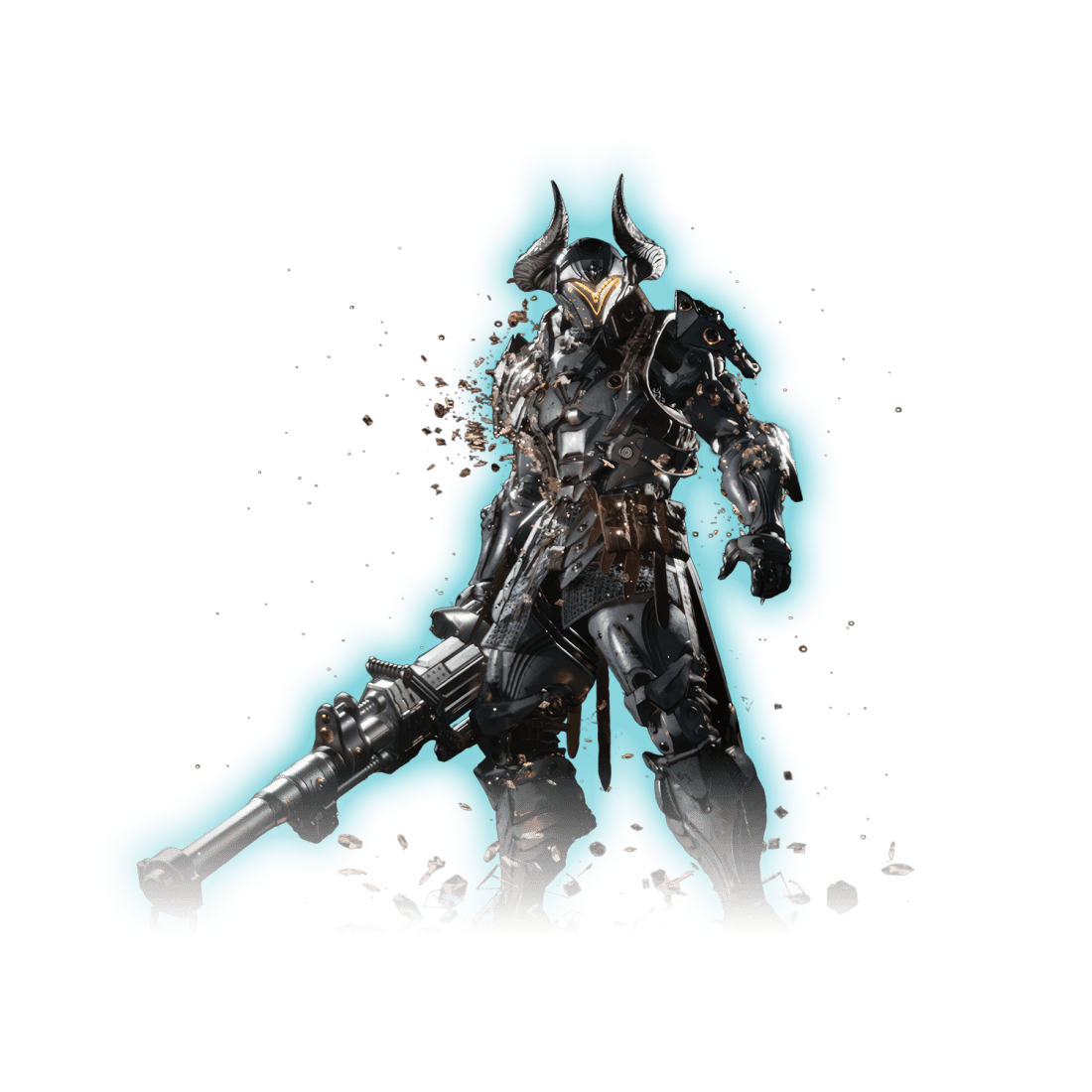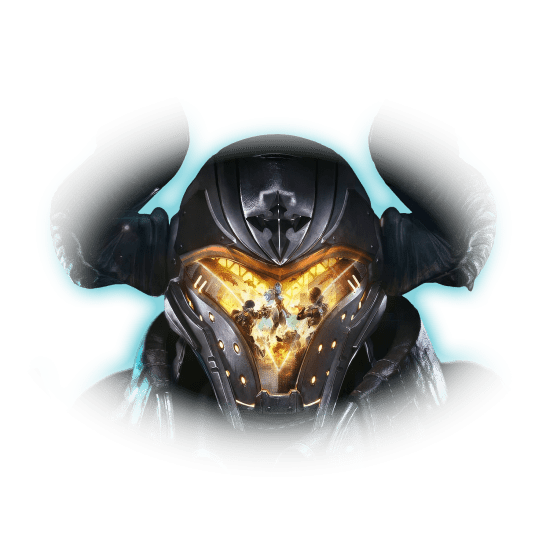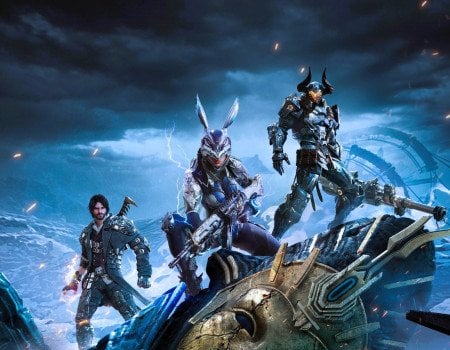Welcome to the First Descendant beginner guide where we will explore the game from “A to Z”, covering all bits that you need to jump into the game and hit the ground running.
The First Descendant is a new looter shooter with a heavy focus on a roster of unique characters that you can unlock and play. Each of the Descendants, as they’re called, has its own gameplay style and fulfills one of the group roles, whether it be a tank, damage dealer, or support. The game lets you customize your builds by combining all kinds of items and modifications that add new effects or increase the efficiency of your chosen Descendant and their weapons. The game features open-world exploration, massive boss battles, and fast-paced gameplay with all kinds of abilities and ultimates.
If you’re interested in getting into the game, you should consider buying TFD Character Unlock Boost at Skycoach. This service helps you unlock more Descendants, which is very important in the endgame. You need to have as many characters unlocked as you can, preferably all of them, even if you only prefer playing on one of them. Since there are various character unlock challenges and requirements for each of the Descendants, it could potentially take you a very long time to get them all unlocked. But, with this boosting service from Skycoach, you’ll get any specific Descendant or all of them unlocked in no time!
IMPORTANT NOTE: Apart from reading our beginner's guide, you can also Buy The First Descednant Boost from Skycoach. We offer a wide range of products at the lowest market price and with the fastest delivery. You can make your first purchase even CHEAPER if you find a special PROMO CODE (highlighted in green) hidden in this article and get a 20% DISCOUNT.
The First Descendant Character Roster Overview
Let’s begin our First Descendant starting guide with some basics. Descendants are characters that you will play as in the game. These come in all sorts, shapes, and sizes, with different playstyles, strengths, and weaknesses. Not all of the Descendants are unlocked at the start of the game, and you will have to complete a series of challenges to unlock each one.
Don’t know how to start playing First Descendant as a beginner? Start by picking your first character. The game does let you pick between 3 starting Descendants:
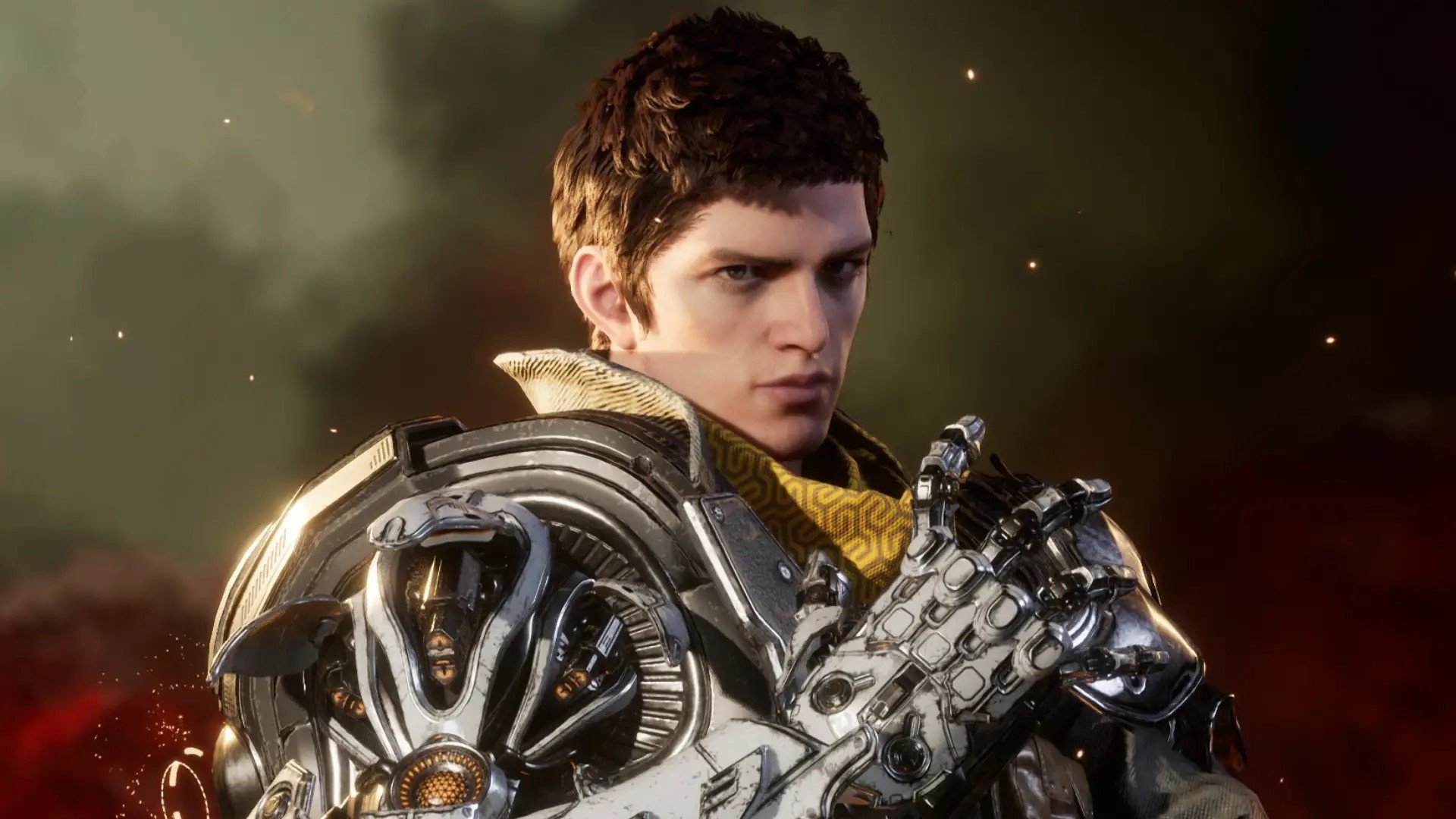
- Lepic – a high-damage character excelling in mob clearing and sustain, shining in early-game scenarios. His burst damage capabilities with Overclock and Overkill make him effective against bosses. Lepic’s standout feature is his passive ability, Close Call, which makes him temporarily immune to death and restores health, providing significant survivability. He offers a straightforward and enjoyable playstyle with broad utility. BLOG20
| Ability | Description | Cost | Cooldown |
| Grenade | Throws a grenade forward, inflicting Skill ATK x 123% explosive damage to enemies within 6 m radius. | 30 | 10s |
| Power Stream | Enters Power Stream mode. Increases Skill ATK by 10% for 18s. Attacking with Grenade and Arm Launcher in Power Stream mode adds Burn effect to the enemy. | 20 | 20s |
| Traction Grenade | Throws a Traction Grenade forward to pull enemies in within 9 m radius for 2s. | 38 | 25s |
| Arm Launcher | Switches weapon to Arm Launcher within the prosthetic arm, which consumes 10 MP every 1s, and returns to original weapon when MP runs out. Upon attack, Arm Launcher fires a powerful shell, inflicting Skill ATK x 55.6% damage to enemies within 5m radius. Upon landing, the sell causes a flame that inflicts constant damage of Skill ATK x 25.96% per 1s for 4s to enemies within 4 m radius. | 40 | 65s |
| Close Call | Upon receiving fatal damage, gains Close Call. While Close Call is active, becomes immune to damage and Crowd Control effects for a certain period of time. When Close Call ends, recover HP proportional to own Max HP. This effect is not affected by Incoming Recovery or Outgoing Recovery. | – | 600s |
Burn – Lepic’s Burn effect inflicts Skill ATK x 15% as constant damage every 1s for 5s.
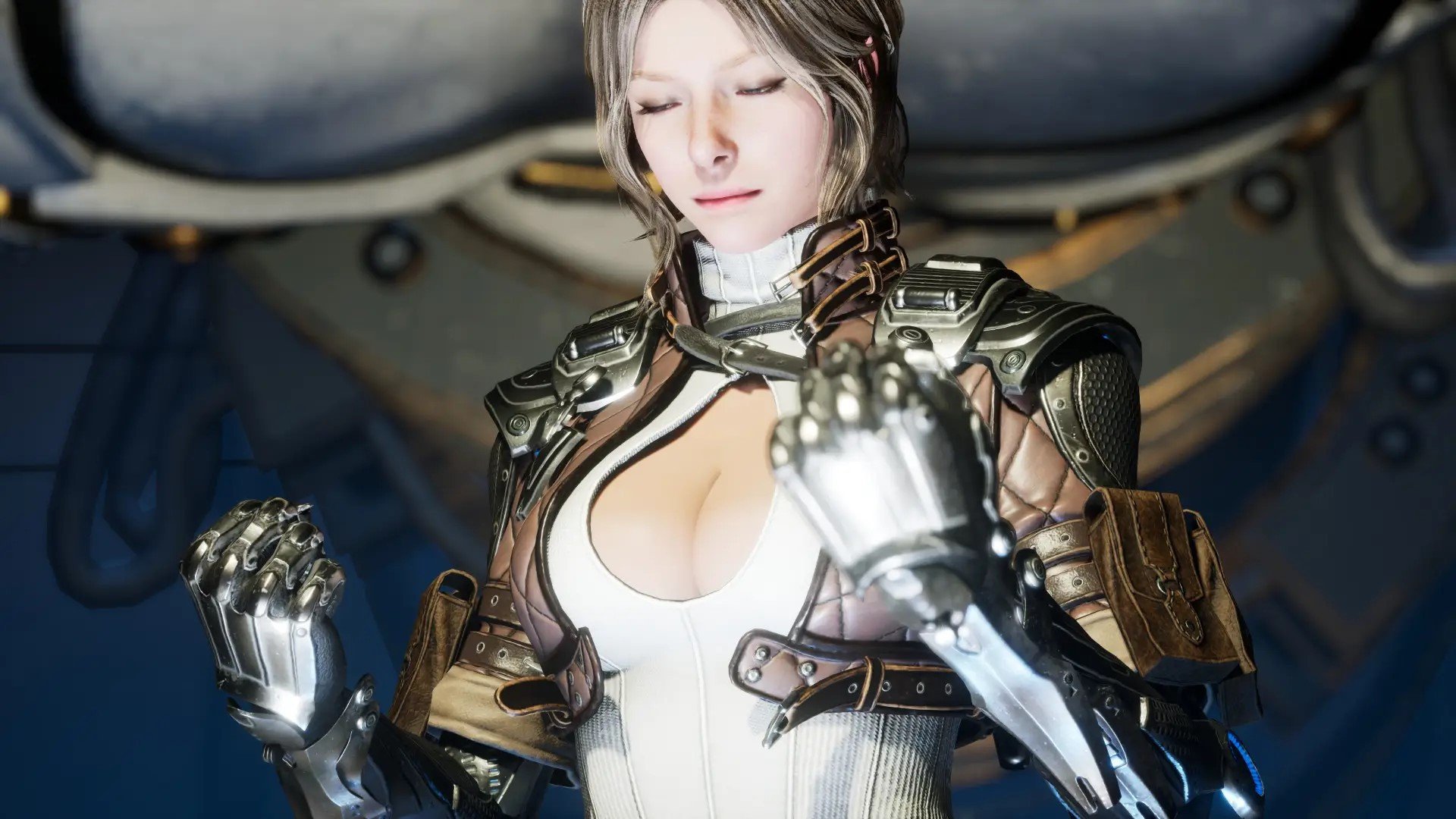
- Viessa – requires more strategic play due to her fragility, but she is a powerful glass cannon. Her primary strength lies in her ability to inflict the Ice Shackle debuff, slowing and eventually immobilizing enemies. Her passive, Ice Sphere, deals damage and inflicts Ice Shackle on nearby enemies, offering passive AoE damage. Viessa’s Frost Road ability increases her movement speed and Energy Shield, aiding in mobility and survival. She is notable for mob control and AoE abilities, making her a strong, though delicate, option.
| Ability | Description | Cost | Cooldown |
| Ice Beam | Fires an Ice Beam that explodes where it hits, dealing Skill ATK x 40% damage at the center of the explosion and dealing Skill ATK x 33% explosion damage to enemies within 3.5 m radius of the center. All enemies hit are inflicted by the Ice Shackle effect. | 25 | 8.5s |
| Frost Fog | Enters Frost Fog state for 17s. In the Frost Fog state, Running Speed is increased by 30%, Shield by 101, and Ice Sheets are created upon touching the ground. Enemies touching the Ice Sheets are inflicted with the Ice Shackle effect. | 24 | 25s |
| Ice Wave | Projects cold air forward in a 7.5 m radius cone. Enemies touching the cold air are inflicted with Skill ATK x 45% damage and Ice Shackle effect. | 22 | 7s |
| Blizzard | Creates a Blizzard that remains active for a certain period of time. Enemies engulfed by the Blizzard receive continuous damage, become inflicted with the Ice Shackle effect, and their DEF decreases. When the Blizzard disappears, it inflicts AoE damage and Ice Shackle effect on nearby enemies. | 38 | 40s |
| Ice Sphere | Upon using a skill to have an enemy enter a certain Ice Shackle stage, creates an Ice Sphere that flies around nearby. The Ice Sphere that is created flies at a nearby enemy, dealing damage to the hit enemy and AoE damage to nearby enemies. The hit target is inflicted with the Ice Shackle effect. Ice Shackle decreases the enemy’s Speed and increases in stage when the effect stacks. | – | 20s |
Ice Shackle – Increases by 2 stages upon inflicting damage, increases by 1 stage upon inflicting explosion damage.

- Ajax – is a highly defensive character, similar to Viessa, but with a focus on survivability. He has two abilities that create shields, one of which, Orbit Barrier, can reflect enemy attacks. His other abilities provide knockback and stun effects, creating openings to attack or escape. Ajax’s high defense and max HP make him durable, though at the cost of some passive damage and AoE compared to Viessa. He is well-suited for close-quarter combat with high-damage guns, ensuring he can withstand risks and emerge unscathed.
| Ability | Description | Cost | Cooldown |
| Reversed Door | Creates a barrier for 10s. The barrier has DEF equivalent to Ajax’s DEF x 100% and HP equivalent to Max HP x 160%. When hit by an enemy projectile, the barrier accumulates Void Energy equal to inflicted damage x 700%. Using Enhanced Skill adds Enhancement Effect. | 24 | 24s |
| Void Walk | When hitting the ground after a jump, inflicts enemies within 9.5 m radius with Skill ATK x 46% damage and stuns them. Using Enhanced Skill adds Enhancement Effect. | 35 | 12s |
| Expulsion | Strikes nearby enemies within 5 m radius with Skill ATK x 46% damage and Knockback effect. Using Enhanced Skill adds Enhancement Effect. | 30 | 10s |
| Hypercube | Creates a dome-shaped barrier for 10s. The barrier has DEF equivalent to Ajax’s DEF x 100% and HP equivalent to Max HP x 160%. When hit by an enemy projectile, the barrier accumulates Void Energy equivalent to inflicted damage x 700%. Using Enhanced Skill adds Enhancement Effect. | 30 | 24s |
| Event Horizon | The ability to store Void Energy during battle. Void Energy can be used to enhance skills with additional effects. | – | – |
Enhancement Effect – When the enhanced barrier is hit, it reflects damage equivalent to 30% of Ajax’s DEF.
TLDR, Lepic is a standard soldier with grenades who gets immunity on death. Viessa is like a frost mage with lots of AoE abilities that slow down enemies. Ajax is a tanky melee brawler.
Here, you have three distinct playstyle archetypes, so pick the one that feels best to you, and you’re all set. If you would like to check out a First Descendant complete guide on all Descendants, click on the link below.
The First Descendant Locations

Albion is the town hub for all of your in-game needs. Here, you will find vendors, progress the main story, launch side-missions and group activities, check your mail, and store items in your vault. You’re going to be spending a lot of time in Albion. So, one of the First Descendant tips we’d like to give you – get familiar with where things are and some of the shortcuts that exist throughout the city.
Outside of Albion, we have 8 biomes to explore:
- White-night Gulch
- Vespers
- Agna Desert
- Sterile Land
- Kingston
- Echo Swamp
- Fortress
- Hagios
These biomes vary in appearance, enemies, and content. In case you were wondering how to play First Descendant, the main story will take you through each one of them, but your first destination will be Kingston.
Activities
When running out in the open world, you’re going to encounter a lot of things you can interact with:
- Chests
- Public events
- Missions
World missions are like Patrols from Destiny 2. You can activate them by interacting with floating devices. These will start the mission that other players can join at any time. These missions will grant some rewards as well as progress the main story.
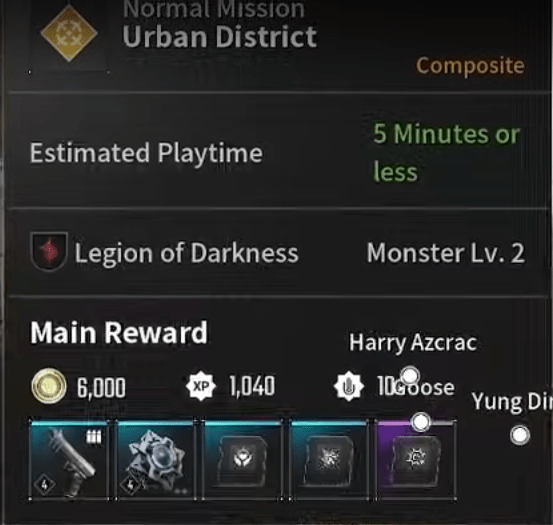
Some of these world missions are tied into special side-quests that will unlock certain weapons and Descendants or give you rare materials. One of the best First Descendant tips for beginners you can get is not to skip these missions. So, make sure to look at the rewards to find the one you’re after and make sure you’re spending your time wisely.
Some missions encourage you to group up by offering a matchmaking system. The best thing is – you don’t have to wait to start the mission. There’s a join-in-progress that will put players with you wherever you are on the current objective.
Group content is not to be mistaken for group missions. This is special instanced content that can be launched from NPCs in Albion.
Group Content
Let’s change gears and continue our First Descendant guide by explaining another type of content. This is where you’re going to need a big roster of available Descendants. This type of content is done only in a group of players, so you need to make sure you have enough playable characters to fulfill any group role, whether it is a tank, a damage dealer, or a support.
Group content consists of dungeons, or as the game calls it, “Infiltrations.”
Infiltrations are specialized missions. Each of the eight zones on the map has two of these for a grand total of sixteen. Each infiltration comes with two difficulties:
- Normal – basic difficulty where you play through the mission trying to farm out some resources or gear.
- Hard – unlocked after progressing the story, this is a much harder difficulty that offers much more rewards.
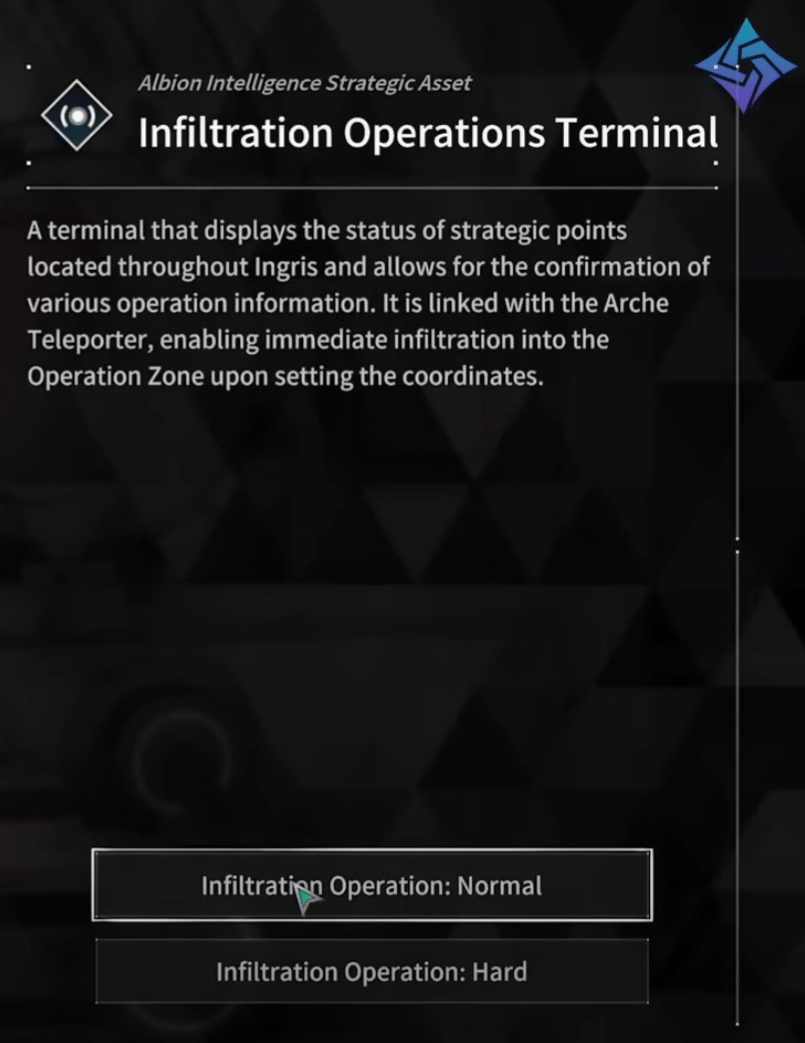
Infiltration rewards are changed regularly, so there’s no need to farm a specific mission for a specific reward. Here’s an example of rewards for the Bio-Lab mission:
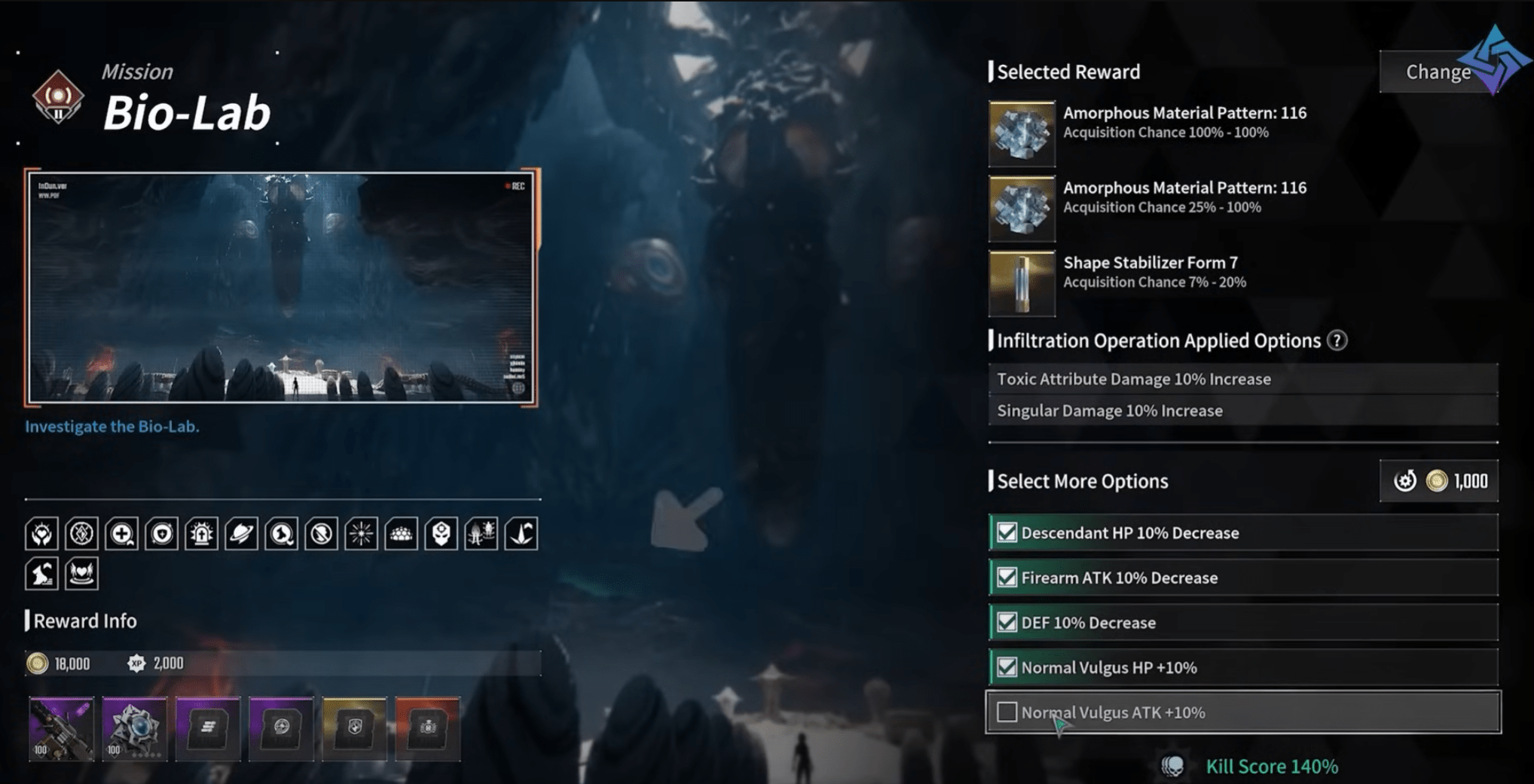
- A rare weapon
- A rare component
- A variety of mods: rare, ultimate, transcendent.
- Selected reward – choose one at the end of the mission.
- Experience
- Gold (currency)
The mission also features modifiers that can be selected to increase its difficulty. Bio-Lab’s optional modifiers include:
- Descendant HP 10% Decrease
- Firearm ATK 10% Decrease
- DEF 10% Decrease
- Normal Vulgus HP +10%
- Normal Vulgus ATK +10%
A good First Descendant new player guide will tell you that these aren’t important for new players. But a great guide will tell you that selecting these modifiers helps you acquire points that determine the bonus rewards that you’re going to get in the end. By activating more of these modifiers, you’re going to get more points per kilim, which will allow you to hit those point thresholds much easier.
Special Operations
There are 8 Special Operations, also known as “Incursions,” with only three types between them.
- Block Kuiper Mining – kill enemies within a time limit to clear a wave. Each new wave spawns harder enemies. The incursion ends when enemies cannot be defeated.
- Resource Defense – protects a target from being destroyed by enemy assaults (waves) for a certain period. The mission will end when you fail.
- Neutralize Void Experiments – chase down and kill a specific Void Bomber monster that is running away.
The whole point of these missions is to try and last as long as possible and progress by killing enemies, completing objectives that earn you rewards. BLOG20
The developers claim that this a very challenging type of content. Indeed, the difficulty spike a huge. Each new wave of enemies is much stronger and deadlier than the previous.
Void Intercept Battles

Void Intercept are giant boss battles. This is a signature activity in the game, a thing that makes gamers go: “ooh, that’s from The First Descendant”.
These boss battles have unique battle mechanics to the fold. You’re going to have to use specific strategies in order to defeat the bosses. This is where you’re going to need different roles in a group. Someone will have to take care of adds with AoE damage, someone needs to absorb the damage, while damage dealers input as much damage as they can dish out. Of course, there’s got to be a support who can buff and heal injured teammates.
This activity is a great place to farm materials to unlock Descendants and ultimate weapons. Specific Descendants like Bunny and Clay require you to collect materials that drop from specific bosses.
The First Descendant Gearing Explained
Let’s start with weapons. Guns in this game come in different qualities or rarities:
- Common
- Rare
- Ultimate
- Transcendent
Every weapon has a baseline stat system: DPS, Firearm ATK, Magazine size, and Fire rate.
Rare quality of weapons and above come with extra affixes to look for. These are bonus stats that will help make the weapon more valuable. These bonus stats can either add to baseline stats or secondary stats, such as elemental damage.
Ultimate weapons take things a step further. These weapons come with special effects tied to them. Example:
- Prayer (Divine Punishment AR) – Base Hit Rate decreased by 40%. When granting a buff to allies, excluding self, grants self the unique effect, Meditation. Increased DEF by a base of 10% for the 30 sec when this effect is active. This effect stacks up to 3 times and increases DEF by 5% per stack.
Some of these special effects synergize with specific Descendants, while others do not.
While not exactly one of the First Descendant tips for new players, these unique effects can be upgraded by consuming another weapon with a unique effect (it doesn’t have to be the same one). The process of consuming another weapon also increases the stats of the weapon you’re upgrading. Therefore, you can carry over the progress on one weapon to a new one, so you’re not wasting any of the enhancement investment that you’ve put into an older weapon you want to replace.
Transcendent rarity comes with a higher range of affixes and also comes with unique effects.
Transmission Process
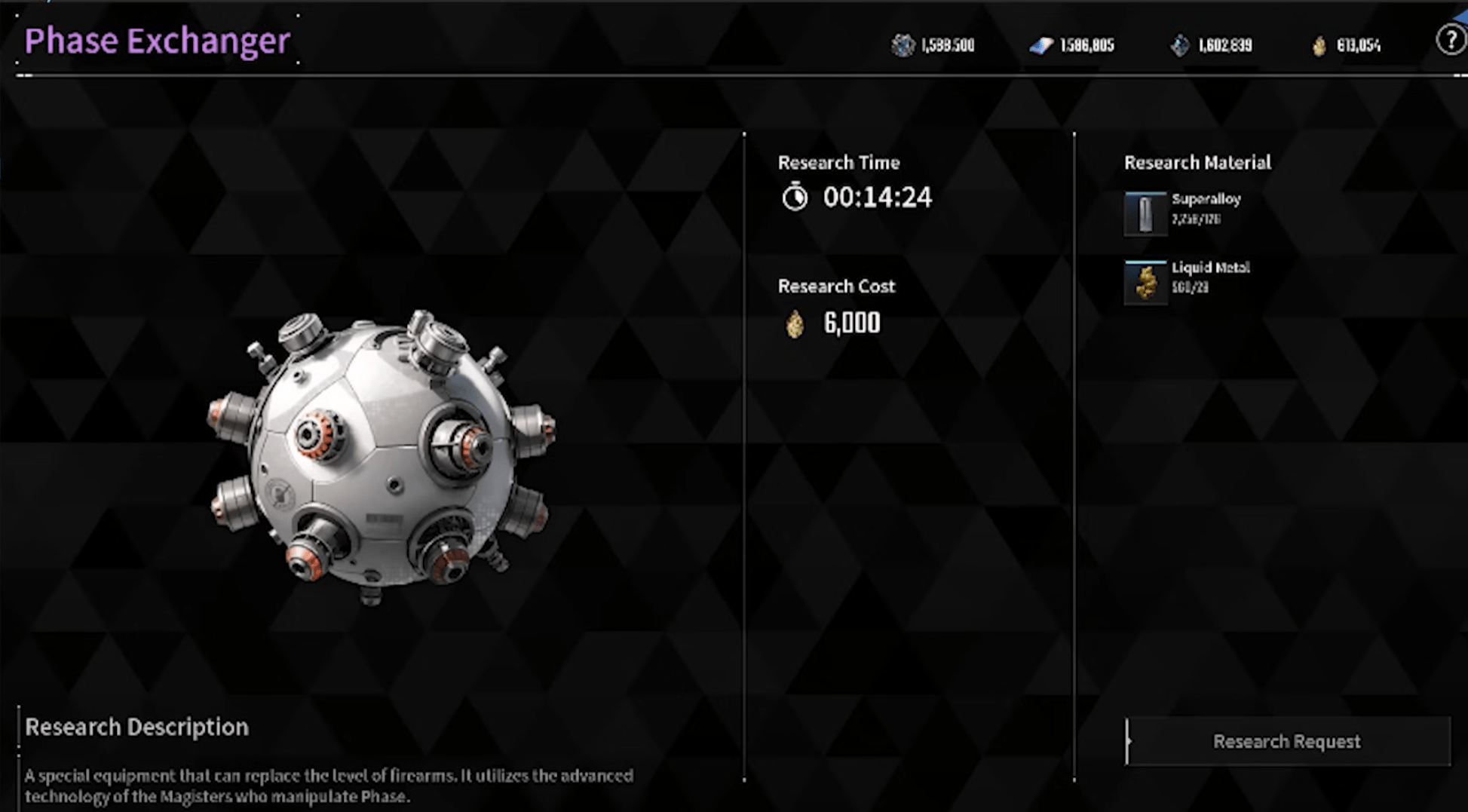
In a similar way to upgrading the unique effect of a weapon, you can consume weapons to increase the rank of a weapon that you want. So, if you have a favorite level 1 weapon and an unwanted level 5 weapon, you can consume the level 5 weapon and give its levels to the level 1 weapon. This process requires an item or a resource called Phase Exchanger that can be crafted from the materials you earn from dismantling weapons.
Components & Reactors
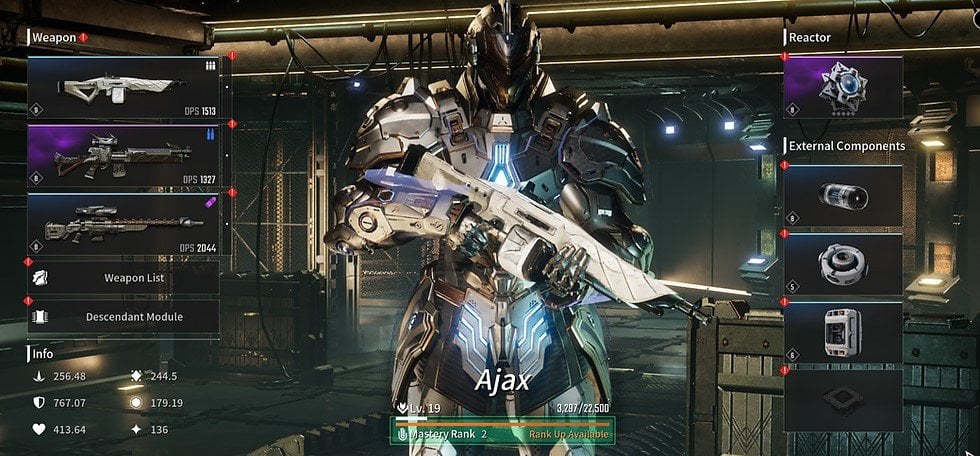
Components are items that you can equip on your character to give yourself passive bonuses. There are only 4 slots for components, though. You can increase stats like multiple resistances, maximum health, firepower, etc.
The components come in sets. If you manage to get more than one component from the same set, it will unlock additional bonuses. For instance, here are the bonuses for the Supernova set:
- x2 – Skill Electric Power +15%
- x4 – Skill Arche Type Fusion Power + 20% on Skill Attack upon an enemy inflicted with Electrocution, activates Executioner’s Thunderbolt at target’s location, dealing additional damage equivalent to n% of Skill ATK.
Basically, you should consider components a backend of a build, whereas weapons and Descendants are the frontend of a build. Components drop from the Void Intercept battles. Every boss drops its own set of components, so you’re going to end up farming bosses to get a full set.
Reactors increase the power of the Descendant’s skills. Each reactor has a skill type therefore, they only match with certain Descendants. For example, there are reactors that enhance Ice damage skills, which would be useful for Viessa but not for Blair, who is a fire-based character.
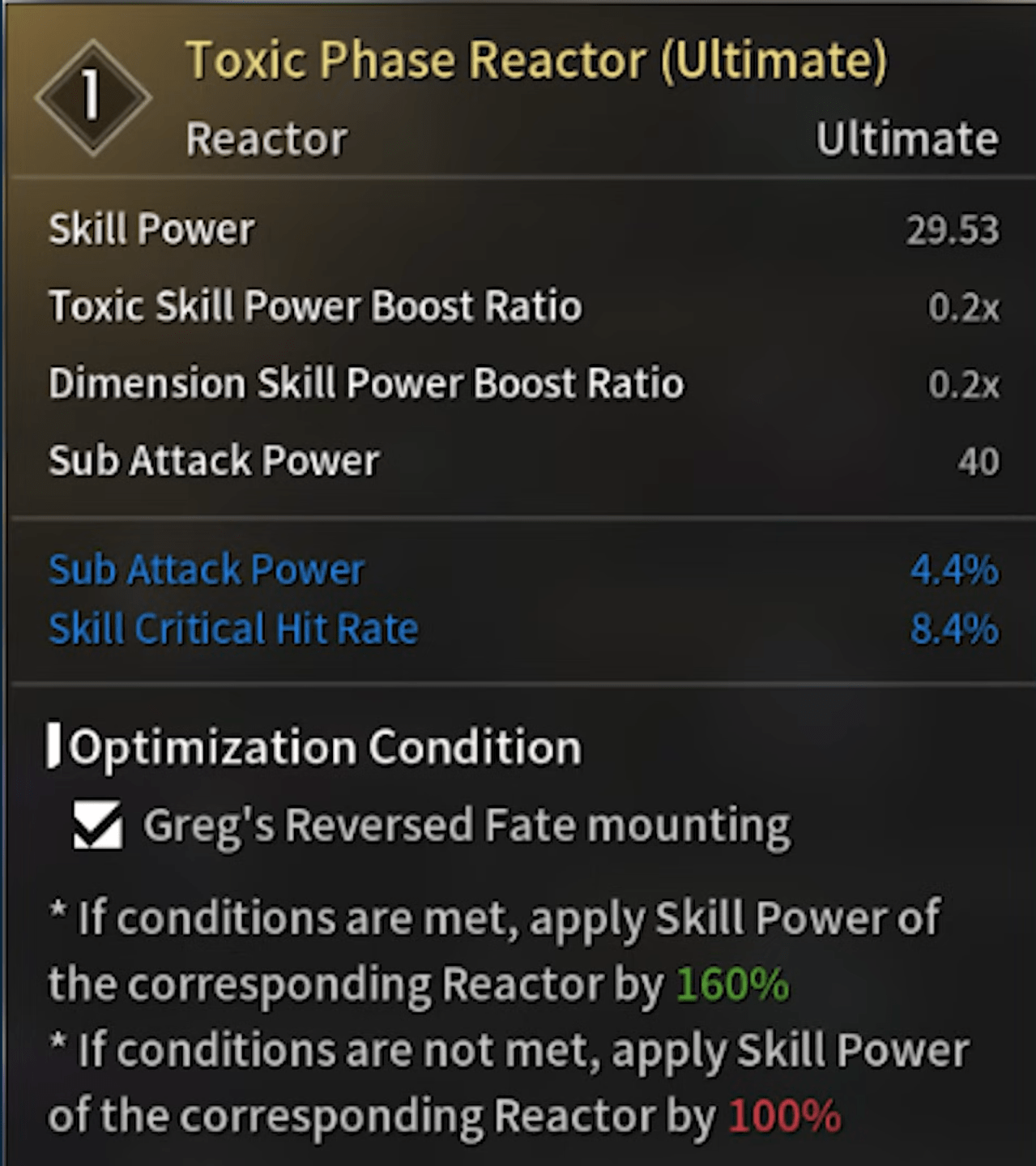
Reactors can be optimized which makes them offer even bigger bonuses. Optimization requires completing specific challenges or meeting a condition. For example, the Toxic Phase Reactor requires a specific weapon to be equipped. So, make sure to pick the right reactors for your Descendant and try to meet its conditions to squeeze all of the juice out of it.

Last but not least, reactors can be upgraded by spending consumable items to improve the reactor’s power.
Module System
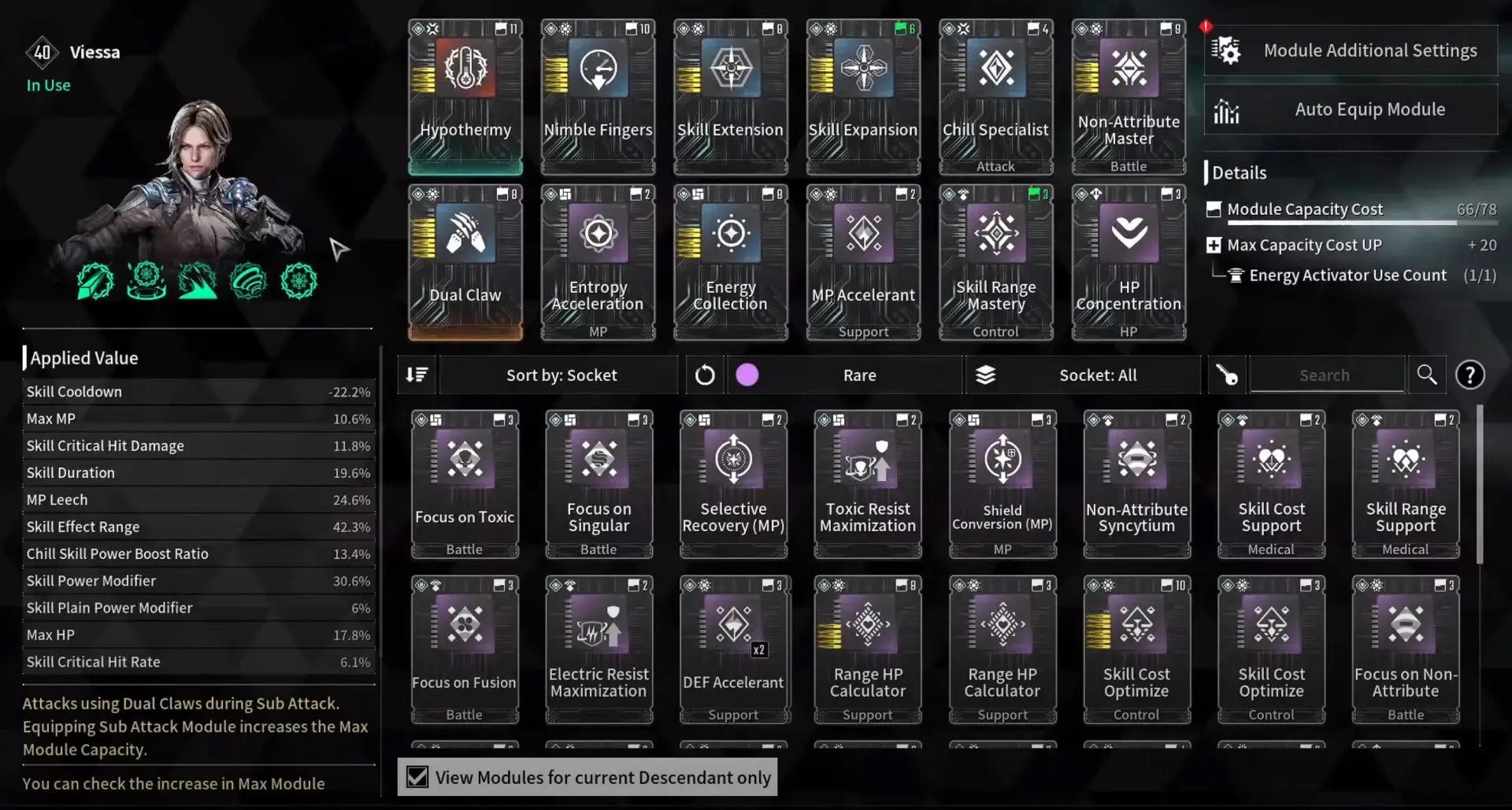
Another system that is tied to your Descendant power and effectiveness is the Module System. Modules can be used to augment your melee ability, provide increased base stats, etc.
When you use your Descendant, it increases their Mastery Rank. Once you reach 100% of your Mastery Rank, you need to return to Albion to perform a Mastery Rank Up ritual. Increasing the Mastery Rank unlocks more Module slots, Module capacity, as well as inventory and storage slots for equipment.
Modules are items that you can attach to your weapons and Descendants in order to increase their stats. Some Modules are specific to certain weapons and Descendants, so you do need to match the type in order to use them. BLOG20
Each weapon can have up to 10 modules. Every time you equip modules on a weapon, they can be carried over to another copy of a weapon. So, for example, if you find a higher-level assault rifle with the same name, you can simply transfer all of your modules when equipping a higher-level copy of a weapon.
A Descendant can equip up to 12 modules, but two of the slots are reserved for special types of modules:
- Skill Module – modify how skills work.
- Sub Module – add a new melee attack.
Modules can also be upgraded and dismantled as you see fit. Dismantling modules gives you a resource which is spent on enhancing other modules along with gold.
Each module also has a capacity value, and increasing a module’s rank also increases its capacity.
Each module and module socket has a type, and if you match the module’s type with the module’s socket type, by slotting it there, it’s going to decrease its capacity cost. You can use that to fit in more modules.
Conclusion
The First Descendant is a dynamic game where you control characters with all kinds of abilities and can customize them in a lot of different ways. There’s a hub location where you get the quests and do the trading, and there are eight open-world locations where you can go explore and kill things. There are various hardcore missions, including huge boss battles that drop upgrade components and resources that can help unlock more Descendants.
This First Descendant beginner’s guide 2024 covered pretty much every important aspect of the game. So, enjoy your adventures, and don’t forget to have fun, Descendant!
F.A.Q.
What should I do as a beginner in First Descendant?
As a beginner, you should pick your first Descendant and start doing the story content, which will take you through the game’s locations and introduce you to all kinds of activities.
What is the best start character in First Descendant?
You can pick between Lepic, Viessa, or Ajax. Each of them has a unique playstyle, and all three are solid choices for a new player.
Where do I start first in First Descendant?
You can start by exploring Albion, the hub town in the game. It will always have things for you to do. From there, you can start missions and go out into the open-world locations.
What is the easiest character for beginners in First Descendant?
Lepic is the most straightforward Descendant in the game. He is easy to use, and his passive even saves you from death.
Is First Descendant easy for beginners?
Despite a large amount of progression systems, First Descendant is an easy game for beginners. It has an addictive gameplay loop that will motivate you to dig deeper into its content.
Is it easy to start First Descendant?
First Descendant is pretty easy to start as the game gradually introduces you to its content instead of just dropping everything it has on your head.


